In this section, we present monthly research papers which, in the opinion of the editorial team, represent trends in electronics technology. This review of the year gives our readers an overview of the topics covered and encourages them to read on if they have overlooked an article.
Base materials for recyclable PCBs
As printed circuit boards that have been assembled to date are notoriously difficult to recycle at the end of their service life, many research institutes have been working for some time on developing base materials that simplify recycling or make it possible at all. This is illustrated by the technology articles in the April and May issues. It remains to be seen how these technologies developed in the laboratory can be transferred to industrial practice.
April - New method for manufacturing recyclable rigid printed circuit boards
 The interesting research work carried out by various universities in Kazakhstan on practicable processes and technologies for avoiding PCB waste and recycling the source materials and components is, in our opinion, well worth reading.
The interesting research work carried out by various universities in Kazakhstan on practicable processes and technologies for avoiding PCB waste and recycling the source materials and components is, in our opinion, well worth reading.
It describes a process for manufacturing printed circuit boards using polymers based on polylactic acid (PLA) as a binder. PLA replaces the resins in conventional base materials, which are known to be harmful to the environment. It is shown how a double-sided printed circuit board is manufactured and assembled. All electrically relevant properties of the new base material are compared with those of FR 2 and FR 4. The results are impressive, as the most important characteristics differ only slightly. Experiments showed that the assembled PLA-based circuit board can be broken down into its original components, thus recovering 95% of the weight of the raw materials and 100% of the electronic components.
May - The 'shiny lacquer spore' as a substrate material for flexible printed circuit boards
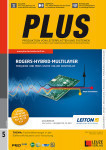 In this article, the focus is not on recycling rigid printed circuit boards, but on flexible printed circuit boards. Instead of the polyester or polyimide films normally used as a base material, an Austrian research team is investigating the use of specially cultivated mycelial skins of a fungus, the shiny lacquer fungus. Not only the cultivation of the mycelial skins is described, but also the application and structuring of the copper conductor tracks. The advantage is that the base material can be biodegraded under certain conditions at the end of the life cycle of the printed circuit board and the metallic conductor tracks and electronic components can be reused.
In this article, the focus is not on recycling rigid printed circuit boards, but on flexible printed circuit boards. Instead of the polyester or polyimide films normally used as a base material, an Austrian research team is investigating the use of specially cultivated mycelial skins of a fungus, the shiny lacquer fungus. Not only the cultivation of the mycelial skins is described, but also the application and structuring of the copper conductor tracks. The advantage is that the base material can be biodegraded under certain conditions at the end of the life cycle of the printed circuit board and the metallic conductor tracks and electronic components can be reused.
Resilience of supply chains
This article is of interest to all companies that want to minimize risks in disruptive supply chains.
February - Resilience in transnational supply chains
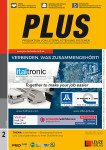 Inga Carry and Meike Schulze from the German Institute for International and Security Affairs deal with the considerable susceptibility to disruption of globally interlinked and complex supply chains. Among other things, they describe the risks in the semiconductor industry, both for the most important raw material, silicon, and for semiconductor components, and show how, in addition to the diversification of a company's sources of supply, transparency and sustainability in the human rights and environmental sense can make supply chains more resilient. The researchers also discuss relevant national and EU laws and legislative initiatives. They show that companies can use sustainability and transparency to identify existing dependencies and potential risks and take remedial action.
Inga Carry and Meike Schulze from the German Institute for International and Security Affairs deal with the considerable susceptibility to disruption of globally interlinked and complex supply chains. Among other things, they describe the risks in the semiconductor industry, both for the most important raw material, silicon, and for semiconductor components, and show how, in addition to the diversification of a company's sources of supply, transparency and sustainability in the human rights and environmental sense can make supply chains more resilient. The researchers also discuss relevant national and EU laws and legislative initiatives. They show that companies can use sustainability and transparency to identify existing dependencies and potential risks and take remedial action.
Digital twins
Another key topic of our research section was the use of so-called digital twins - virtual mirror images of a real object or a real process. The following articles deal with their practical use and the state of research in certain areas:
August - Use of digital twins in the electroplating of printed circuit boards
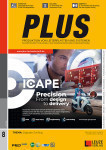 The author Dr.-Ing. Agnieszka Franczak is employed by a provider of computer-aided engineering services and convincingly describes the advantages in terms of quality and cost-effectiveness when using a digital twin in the electroplating of printed circuit boards. All relevant data from sensors, devices and other sources are collected to create a digital model. The author explains the electroplating process commonly used in PCB technology and describes how a digital twin is created and which data is incorporated into it. Both the analysis and the process optimization are carried out in a computer environment. For the subsequent design of the real electroplating process, this brings considerable advantages in terms of the quality of the printed circuit boards and the economic efficiency of the process. The author takes an in-depth look at PCB design with regard to copper balance and shows how the design can be optimized using a digital copper balance tool.
The author Dr.-Ing. Agnieszka Franczak is employed by a provider of computer-aided engineering services and convincingly describes the advantages in terms of quality and cost-effectiveness when using a digital twin in the electroplating of printed circuit boards. All relevant data from sensors, devices and other sources are collected to create a digital model. The author explains the electroplating process commonly used in PCB technology and describes how a digital twin is created and which data is incorporated into it. Both the analysis and the process optimization are carried out in a computer environment. For the subsequent design of the real electroplating process, this brings considerable advantages in terms of the quality of the printed circuit boards and the economic efficiency of the process. The author takes an in-depth look at PCB design with regard to copper balance and shows how the design can be optimized using a digital copper balance tool.
November - Digital twin for more reliable electronics
 The November issue focuses on digital twins that simulate complex physical systems, e.g. electronic assemblies for automotive and railroad technology. Simulation technology can be used to extend the life cycle. The digital twins are used to monitor reliability behavior by creating a digital fingerprint that reacts proactively to age-related wear. Researchers at the Fraunhofer Institute for Reliability and Microintegration have developed a simulation concept that demonstrates new approaches for multi-domain system modeling to evaluate the degradation behavior of a system in the field under external loads. For demonstration purposes, the researchers use a bridge rectifier circuit in which the junction temperature is considered as the main stressor. The circuit is subjected to an operational profile that is exposed to external thermal and electrical stresses. The approach explained in detail can be applied to complex systems where more than two domains (e.g. thermomechanical and electrical) need to be coupled. For this purpose, different software tools or simulation models can be coupled to generate a complete digital twin of the complex physical system.
The November issue focuses on digital twins that simulate complex physical systems, e.g. electronic assemblies for automotive and railroad technology. Simulation technology can be used to extend the life cycle. The digital twins are used to monitor reliability behavior by creating a digital fingerprint that reacts proactively to age-related wear. Researchers at the Fraunhofer Institute for Reliability and Microintegration have developed a simulation concept that demonstrates new approaches for multi-domain system modeling to evaluate the degradation behavior of a system in the field under external loads. For demonstration purposes, the researchers use a bridge rectifier circuit in which the junction temperature is considered as the main stressor. The circuit is subjected to an operational profile that is exposed to external thermal and electrical stresses. The approach explained in detail can be applied to complex systems where more than two domains (e.g. thermomechanical and electrical) need to be coupled. For this purpose, different software tools or simulation models can be coupled to generate a complete digital twin of the complex physical system.
Reliability of electronic assemblies
Three technology contributions were devoted to a topic that is considered a perennial issue: improving the reliability of electronic assemblies, especially in safety-relevant areas.
June - Dynamic topography measurement on components, substrates and modules
 In the June issue, Oliver Albrecht and Thomas Zerna, scientists at TU Dresden, describe how topography measurements on components and electronic assemblies can be used to detect the causes of faults due to thermal deformation of the assemblies at an early stage. The deformations are caused by the different thermal expansion coefficients of the materials used in an assembly. The scientists describe the underlying measurement principles, in particular the virtual Moiré method and fringe projection. The typical sequence of a complete investigation and possibilities for evaluating the measurement results are described. The researchers discuss the measurement results using three examples (BGA with head-in-pillow errors, DCB substrates, antenna module).
In the June issue, Oliver Albrecht and Thomas Zerna, scientists at TU Dresden, describe how topography measurements on components and electronic assemblies can be used to detect the causes of faults due to thermal deformation of the assemblies at an early stage. The deformations are caused by the different thermal expansion coefficients of the materials used in an assembly. The scientists describe the underlying measurement principles, in particular the virtual Moiré method and fringe projection. The typical sequence of a complete investigation and possibilities for evaluating the measurement results are described. The researchers discuss the measurement results using three examples (BGA with head-in-pillow errors, DCB substrates, antenna module).
According to the researchers, the investigations show that topography measurement is a suitable method for diagnosing the causes of defects, but is also suitable for preventive investigations to identify potential production defects.
September - Fast test method for reliability tests of solder joints
 One research topic at the Institute of Chemical Technology at TU Wien is the development of a new test method for solder joints in multilayer electronic assemblies. It allows reliability tests to be carried out in a much shorter time than was previously possible. A high-frequency cyclic bending test system is described, with which the service life of the solder joints can be determined in a short time. This allows the test duration to be reduced from several months to a few hours. As the test system is equipped with a laser Doppler vibrometry tool, cracks and delamination can also be detected.
One research topic at the Institute of Chemical Technology at TU Wien is the development of a new test method for solder joints in multilayer electronic assemblies. It allows reliability tests to be carried out in a much shorter time than was previously possible. A high-frequency cyclic bending test system is described, with which the service life of the solder joints can be determined in a short time. This allows the test duration to be reduced from several months to a few hours. As the test system is equipped with a laser Doppler vibrometry tool, cracks and delamination can also be detected.
The developers use various examples - high-temperature lead alloys, comparison of lead-free and lead-containing solders, transient liquid phase (TLP) and Ag sintered compounds - to demonstrate the applicability of the test method in terms of reliability assessment.
The method described by Golta Khatibi and Thomas Walter is suitable for the rapid evaluation and screening of solder materials, for classic, high-lead and lead-free solders as well as for sintered and TLP compounds.
October - Predicting the service life of IGBT modules in the shortest possible time
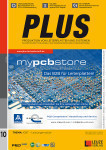 The October article was also about carrying out reliability tests and thus lifetime predictions in a very short time - in this case, however, for wire bond connections in IGBT modules (Insulated Bipolar Transistors). In the article, researchers from TU Wien and FH Burgenland describe a method for the direct comparison of wire bond degeneration using the mechanical BAMFIT test and accelerated power cycling. The aim was to determine the remaining service life in the shortest possible time and to provide a reliable service life forecast. This prevents IGBT modules from failing unexpectedly during operation and causing serious consequential damage.
The October article was also about carrying out reliability tests and thus lifetime predictions in a very short time - in this case, however, for wire bond connections in IGBT modules (Insulated Bipolar Transistors). In the article, researchers from TU Wien and FH Burgenland describe a method for the direct comparison of wire bond degeneration using the mechanical BAMFIT test and accelerated power cycling. The aim was to determine the remaining service life in the shortest possible time and to provide a reliable service life forecast. This prevents IGBT modules from failing unexpectedly during operation and causing serious consequential damage.
The current standard method is power cycling. However, crack growth, for example, is often not taken into account due to inadequate assumptions. Service life predictions are also made that deviate widely from the test results. The researchers have therefore chosen a completely new approach by using a BAMFIT (Bondtec Accelerated Mechanical Fatigue Interconnection) test. The test system is equipped with a special resonance test tool that induces local cyclic shear stresses at the joint. This simulates thermomechanical loads during the switching process. A high mechanical test frequency achieves high accelerations so that the service life curves can be generated in a very short time.
Furthermore, comparative studies on the degradation behavior of Al wire bonds under accelerated thermal and mechanical stress are described. For this purpose, the crack growth behavior of Al wire bonds during alternating loading up to failure was investigated using the BAMFIT method and conventionally accelerated power cycling tests. The researchers show that the crack growth curves determined in this way are suitable for service life modeling and for service life predictions in a short period of time.
Artificial intelligence in electronics manufacturing
December - Development of AI-based process optimization in trustworthy distributed manufacturing
 Researchers from the Technical University of Berlin and the Fraunhofer Institute for Reliability and Microintegration (IZM) report on a joint project in which the sequence from the heterogeneous acquisition of process and sensor data to the AI-supported analysis and optimization of the manufacturing process can be represented in a distributed manner at different production sites. The researchers describe how complete in-process data acquisition is ensured and which prerequisites must be created to enable the uniform recording and evaluation of process data from different companies with their own (IT) infrastructures.
Researchers from the Technical University of Berlin and the Fraunhofer Institute for Reliability and Microintegration (IZM) report on a joint project in which the sequence from the heterogeneous acquisition of process and sensor data to the AI-supported analysis and optimization of the manufacturing process can be represented in a distributed manner at different production sites. The researchers describe how complete in-process data acquisition is ensured and which prerequisites must be created to enable the uniform recording and evaluation of process data from different companies with their own (IT) infrastructures.
The authors present concepts they have developed for distributed manufacturing scenarios for safety-relevant electronic assemblies. These include an infrastructure for the trustworthy collection of production data and methods for machine learning to improve product quality based on this data, as well as a chain-of-trust method that is able to ensure trustworthy production not only in a factory, but also in a more complex process chain.
Today, safety-relevant electronic assemblies are generally manufactured in a production facility that is fully adapted to this specific system with all its technological implications.
The aforementioned decentralized production, in which the required expertise is needed at several production sites in order to achieve a comparable result, could be more cost-efficient.
Use and production of three-dimensional electronics
March - Targeted control of forming processes of three-dimensional assembled and printed films.
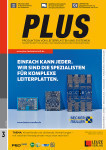 Described is a research project (Fraunhofer IZM and IVV with industrial partners) to develop new methods for the targeted control of the forming process of three-dimensional assembled and printed films. Among other things, questions about the thermoformability and stretchability of printed electrical conductors are being answered and which processes are suitable for controlling the forming of the structured and assembled semi-finished product. The scientists will address the selection of materials and components, the required heating and forming process and the reliability of the electronic components produced. The results of the research work are promising, as the technology described leads to greater design freedom in terms of the shape, position and positioning of the components. Above all, the results show that it is possible to develop an assembly and connection technology that is compatible with thermoforming and injection molding, based on electrically conductive adhesives and conventional SMD assembly processes.
Described is a research project (Fraunhofer IZM and IVV with industrial partners) to develop new methods for the targeted control of the forming process of three-dimensional assembled and printed films. Among other things, questions about the thermoformability and stretchability of printed electrical conductors are being answered and which processes are suitable for controlling the forming of the structured and assembled semi-finished product. The scientists will address the selection of materials and components, the required heating and forming process and the reliability of the electronic components produced. The results of the research work are promising, as the technology described leads to greater design freedom in terms of the shape, position and positioning of the components. Above all, the results show that it is possible to develop an assembly and connection technology that is compatible with thermoforming and injection molding, based on electrically conductive adhesives and conventional SMD assembly processes.
Pressure glass feedthroughs for sensors
January - Production of printed glass feedthroughs for sensors using lasers
 A pressure glass feedthrough is a hermetically sealed interface between the sensor unit and the sensor electronics. At present, feedthroughs are manufactured in an oven process in which the glass body, socket and contacts are heated to the melting temperature of the glass (above 400 °C). As this process is very problematic for temperature-sensitive electronic components, a laser-based process was developed in a project with an industrial partner and the Fraunhofer Institute for Laser Technology, in which the laser is used as a focusable heat source. The article describes the methods used by the project partners to focus the laser beam in such a way that the glass body is melted without damaging the electronics. The reader also learns which parameters influence the process and what pre-treatment is required. Investigations show that helium-tight pressure glass feedthroughs can be produced using the laser process. Finally, the properties of pressure glass feedthroughs manufactured using the furnace process and laser technology are compared.
A pressure glass feedthrough is a hermetically sealed interface between the sensor unit and the sensor electronics. At present, feedthroughs are manufactured in an oven process in which the glass body, socket and contacts are heated to the melting temperature of the glass (above 400 °C). As this process is very problematic for temperature-sensitive electronic components, a laser-based process was developed in a project with an industrial partner and the Fraunhofer Institute for Laser Technology, in which the laser is used as a focusable heat source. The article describes the methods used by the project partners to focus the laser beam in such a way that the glass body is melted without damaging the electronics. The reader also learns which parameters influence the process and what pre-treatment is required. Investigations show that helium-tight pressure glass feedthroughs can be produced using the laser process. Finally, the properties of pressure glass feedthroughs manufactured using the furnace process and laser technology are compared.
Online: https://www.leuze-verlag.de/fachzeitschriften/plus/item/6029-laser-statt-ofenprozess
Detection of chemical contaminants in cleanrooms
July - Detection systems with electrochemically active surfaces
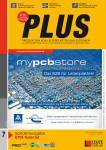 Gloria Lanzinger from the Research Institute for Precious Metals and Metal Chemistry shows how functional layers based on intrinsically conductive polymers can be developed. These polymers are an essential component of breakthrough detectors with electrochemically active surfaces for the detection of chemical contaminants, in particular ammonia and formaldehyde in cleanrooms. Various conductive polymers are examined. The article also deals with which substrates are suitable and what the deposition conditions must be. The properties of the layers produced using potentiostatic and potentiodynamic deposition are examined. It is shown that conductive polymers can be deposited on different substrates using different current modulation. The best results were achieved with the potentiodynamically deposited samples. For example, they were able to detect the ammonia concentration just as well as conventional sensors.
Gloria Lanzinger from the Research Institute for Precious Metals and Metal Chemistry shows how functional layers based on intrinsically conductive polymers can be developed. These polymers are an essential component of breakthrough detectors with electrochemically active surfaces for the detection of chemical contaminants, in particular ammonia and formaldehyde in cleanrooms. Various conductive polymers are examined. The article also deals with which substrates are suitable and what the deposition conditions must be. The properties of the layers produced using potentiostatic and potentiodynamic deposition are examined. It is shown that conductive polymers can be deposited on different substrates using different current modulation. The best results were achieved with the potentiodynamically deposited samples. For example, they were able to detect the ammonia concentration just as well as conventional sensors.


